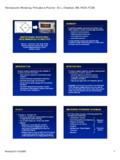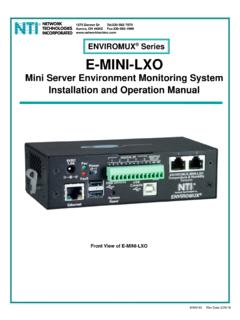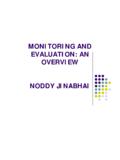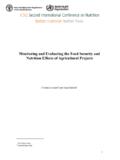Transcription of Temperature and humidity monitoring systems for …
1 ` Supplement 6 WHO Vaccine Temperature and humidity monitoring systems for fixed storage areas Technical supplement to WHO Technical Report Series, No. 961, 2011 Annex 9: Model guidance for the storage and transport of time and Temperature sensitive pharmaceutical products August 2014 World Health Organization 2014 WHO Press, World Health Organization, 20 Avenue Appia, 1211 Geneva 27, Switzerland (tel.: +41 22 791 3264; fax: +41 22 791 4857; e-mail: Requests for permission to reproduce or translate WHO publications whether for sale or for noncommercial distribution should be addressed to WHO Press, at the above address (fax: +41 22 791 4806; e-mail: The designations employed and the presentation of the material in this publication do not imply the expression of any opinion whatsoever on the part of the World Health Organization concerning the legal status of any country, territory, city or area or of its authorities, or concerning the delimitation of its frontiers or boundaries.))
2 Dotted lines on maps represent approximate border lines for which there may not yet be full agreement. The mention of specific companies or of certain manufacturers products does not imply that they are endorsed or recommended by the World Health Organization in preference to others of a similar nature that are not mentioned. Errors and omissions excepted, the names of proprietary products are distinguished by initial capital letters. All reasonable precautions have been taken by the World Health Organization to verify the information contained in this publication. However, the published material is being distributed without warranty of any kind, either expressed or implied. The responsibility for the interpretation and use of the material lies with the reader. In no event shall the World ` Health Organization be liable for damages arising from its use. The named authors alone are responsible for the views expressed in this publication.
3 Technical Supplement: Temperature and humidity monitoring systems for fixed storage areas 3 Acknowledgments The authors of this document are Jean Bedard, MBA , Infitrak Inc and Ryan Sanders, Infitrak Inc. Technical Supplement: Temperature and humidity monitoring systems for fixed storage areas 4 Contents Acknowledgments .. 3 Contents .. 4 Abbreviations .. 6 Glossary .. 7 1. Introduction .. 9 Requirements .. 9 Temperature monitoring systems .. 9 humidity monitoring systems .. 9 Alarm systems .. 9 10 Target readership .. 10 2. Guidance .. 11 Associated materials and equipment .. 11 Related 11 Choosing a monitoring system .. 11 Prepare a user requirements specification .. 11 Select the basic system type .. 12 Match the system to the needs .. 12 Automated continuous monitoring .. 13 Data collection: wireless versus wired data transmission .. 14 Specific requirements for wireless networks.
4 16 Web-based systems .. 16 Alarm system .. 17 User controls .. 17 Adaptability and expandability .. 17 Security and compliance .. 18 Maintenance and support .. 18 system extent .. 19 Number of monitoring points .. 19 Location of monitoring points .. 19 Complimentary services .. 20 Deploying the system .. 20 Technical Supplement: Temperature and humidity monitoring systems for fixed storage areas 5 Post-installation setup and qualification activities .. 20 References .. 21 Annex 1 monitoring system start-up form example .. 22 Revision history .. 30 Technical Supplement: Temperature and humidity monitoring systems for fixed storage areas 6 Abbreviations 30 DTR 30-day Temperature recorder GAMP Good Automated Manufacturing Practices GMP Good Manufacturing Practice GSP Good Storage Practice IQ Installation Qualification IT Information Technology LAN Local Area Network MKT Mean Kinetic Temperature OQ Operational Qualification PDA Personal Digital Assistant PDA Parenteral Drug Association PQ Performance Qualification RFID Radio Frequency Identification Device SaaS Solution as a Service SMS Short Message Service TCP/IP Transmission Control Protocol (TCP) and Internet Protocol (IP) SOP Standard Operating Procedure TTSPP Time and Temperature -Sensitive Pharmaceutical Product URS User Requirements Specification USB Universal Serial Bus Technical Supplement.
5 Temperature and humidity monitoring systems for fixed storage areas 7 Glossary Component: Any major piece, part or assembly of the main equipment or sub-equipment that does not have its own power supply and could not operate as a standalone unit (valves, switches, etc.). Electronic Temperature monitoring and event logger system : system for recording and reporting air and/or product temperatures , with optional facilities for recording and reporting specific events such as door-opening or defrost cycles, and for issuing alarms. Such systems may be user-programmable and may also be remotely monitored via a satellite link. Mapping: Documented measurement of the Temperature and/or relative humidity distribution within a storage area, including identification of hot and cold spots. Operational qualification (OQ): The process of obtaining and documenting evidence, under controlled conditions, that the premises, equipment and supporting systems operate in accordance with their design specifications.
6 Performance qualification (PQ): The process of obtaining and documenting evidence that the premises, equipment and supporting systems , as connected together, will consistently perform in accordance with the approved process method and specifications. Pharmaceutical product: Any product intended for human use or veterinary product intended for administration to food producing animals, presented in its finished dosage form, that is subject to control by pharmaceutical legislation in either the exporting or the importing state and includes products for which a prescription is required, products which may be sold to patients without a prescription, biologicals and vaccines. Medical devices are not included1. Qualification: Action of proving that any premises, equipment and supporting systems work correctly and actually lead to the expected results. The meaning of the word validation is sometimes extended to incorporate the concept of qualification.
7 Refrigeration equipment: The term refrigeration or refrigeration equipment means any equipment whose purpose is to lower air and product temperatures and/or to control relative humidity . Standard Operating Procedure (SOP): A set of instructions having the force of a directive, covering those features of operations that lend themselves to a definite or standardized procedure without loss of effectiveness. Standard operating policies and procedures can be effective catalysts to drive performance improvement and improve organizational results. Storage Temperature : The Temperature range listed on the TTSPP label, and within the regulatory filings, for long-term storage. 1 Definition from WHO/ Rev 1 Sept 2009. Proposal for revision of WHO good distribution practices for pharmaceutical products Draft for comments. Technical Supplement: Temperature and humidity monitoring systems for fixed storage areas 8 Temperature -controlled: Includes any environment in which the Temperature is actively or passively controlled at a level different from that of the surrounding environment within precise pre-defined limits.
8 Temperature excursion: An event in which a TTSPP is exposed to temperatures outside the range(s) prescribed for storage and/or transport. Temperature ranges for storage and transport may be the same or different; they are determined by the product manufacturer, based on stability data. Time and Temperature sensitive pharmaceutical product (TTSPP): Any pharmaceutical good or product which, when not stored or transported within pre-defined environmental conditions and/or within pre-defined time limits, is degraded to the extent that it no longer performs as originally intended. Validation: Documented testing performed under highly controlled conditions, demonstrating that processes, methods, and systems consistently produce results meeting pre-determined acceptance 2 PDA Technical Report No. 39: Guidance for Temperature Controlled Medicinal Products: Maintaining the Quality of Temperature -Sensitive Medicinal Products through the Transportation Environment, 2007.
9 Technical Supplement: Temperature and humidity monitoring systems for fixed storage areas 9 1. Introduction This technical supplement has been written to amplify the recommendations given in Section and of WHO Technical Report Series No. 961, 2011, Annex 9: Model guidance for the storage and transport of time- and Temperature -sensitive pharmaceutical products3. It covers the selection, installation and initial commissioning of Temperature and humidity monitoring systems in fixed storage locations. It does not cover the routine operation of these systems . Related topics are covered in the following Technical Supplements: Checking the accuracy of Temperature control and monitoring devices. Qualification of Temperature -controlled storage areas. Temperature and humidity monitoring systems for transport operations. Temperature mapping of storage areas. Requirements The Model Guidance document defines minimum standards for Temperature and humidity monitoring and alarm systems and components, and for the operational management of these systems .
10 Temperature monitoring systems Air Temperature monitoring systems and devices should be installed in all Temperature -controlled rooms, cold rooms, freezer rooms, refrigerators and freezers used to store TTSPPs. Electronic sensors should be accurate to C or better4. Sensors should be located in areas where the greatest variability in Temperature is expected to occur within the qualified storage volume and they should be positioned so as to be minimally affected by transient events such as door opening. humidity monitoring systems humidity monitoring systems and devices should be used in Temperature -controlled rooms that are used to store TTSPPs that require a humidity -controlled environment. monitoring sensors should be accurate to 5% RH and located to monitor worst-case humidity levels within the qualified storage volume and they should be positioned so as to be minimally affected by transient events such as door opening.














